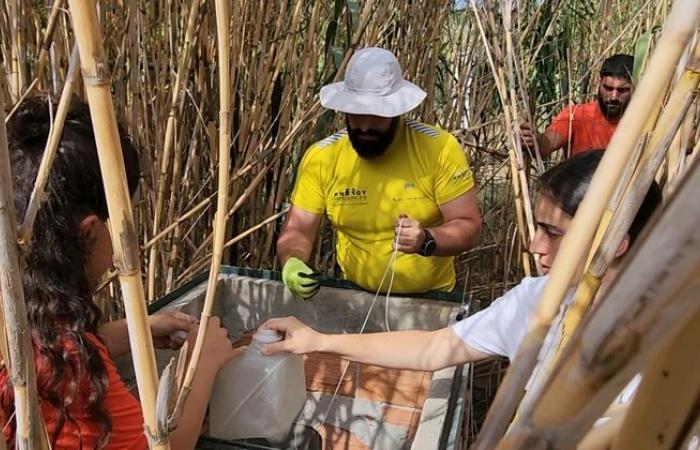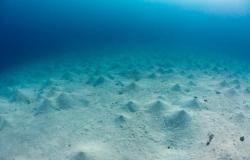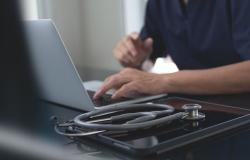There is one invisible force That it has been transforming our planet for billions of years: it’s the billions of billions of microorganisms capable of living in conditions impossible for humans. They are the first and most important life forms on Earth. To study the co-evolution between life forms and the planet, the new sampling campaign begins in one of the places where extreme life forms are at home: the seabed of the Aeolian Islands.
It’s a journey that we will follow live, step by step. From 22 to 26 June the team of researchers from ERC CoEvolve, the project financed by the European Research Council and coordinated by Donato Giovannelli of the Federico II University of Naples, will analyze around twenty extreme sitesas hydrothermal vents And volcanic cratersto catalog the microorganisms they host.
“When we talk about biodiversity we usually think of the variety of animals and the colours of plants, but the greatest biodiversity – observes Giovannelli – is that of microorganisms: a world that we still know very little and what it constitutes the heart of the geological force that changes the planet”.
Perhaps less spectacular than complex organisms, unicellular life has always modified the planet, starting with the production of the oxygen we breathe today. “We cannot separate the planet give her life formsI am two elements in continuous transformation and one modifies the other. It’s a constant co-evolution but we still know very little about it,” says Giovannelli. To understand this relationship more easily, the ideal places are extreme environmentsin which it is possible to observe dynamics without the disturbances due to the presence of other life forms.
“The Aeolianlike many other sites in Italy, are a playground for us because they are rich in extreme microworlds and so far studied only from a geological point of view. We know practically nothing about the microbial communities that live there,” observes the researcher. “We forget the importance that these microworlds have even in our daily lives, but they are fundamental. For example, he concludes for medical research and anti-cancer therapies or for genetics, or even for research into bioplastics or new sources of clean energy.”
Day 4 – ‘Transect’ mission, from hot to cold
Last day of sampling, entirely dedicated to Volcano. The objective in particular is to create atransept‘, that is, one sampling series that they can offer some sort of insight into the situation which is generated in depthin this case we are interested in mapping water wells along a ideal line starting from the base of the volcano and moving away towards the sea.
Let’s start with one first well a few steps away from where the ascent path to the crater starts. It’s deep, approximately 35 metres and to get the water we have to lower a bailer, a sort of tube that closes by itself as soon as you pull it up. As soon as it comes up you understand that the water here is really very warm, approximately 80 degrees: the bailer is deformed due to heatyou must be very careful when handling the sample because you risk burns.
It is impossible to say whether there are microorganisms inside, it is probable but we will only know this after laboratory investigations; in the meantime we can only carry out chemical and physical analyses.
We move a few hundred meters and sample the well in the garden of a house, the temperature drops by several tens of degrees.
We then move to the garden of a hotel and then to a second hotel this time a few steps from the sea. It is the last sample of the entire campaign.
We return home around 5pm and start packing. Tomorrow we leave with a precious cargo: one systematic collection never made before of the life forms of many of the extreme environments of the Aeolian Islands. But before taking the ferry to Milazzo we will take stock of what we have done in recent days.
Day 3 – First time on Lipari
There are no microbiology samplings published so far on the Lipari sites and today’s objective is to fill, at least in part, this void. We do this by taking the 7.50am hydrofoil, a few minutes and we arrive at the port, where a car is waiting for us and takes us to an incredible site, the Terme di San Calogero.
It’s a spa facility sadly disused which arose a few decades ago integrating within it some tubs made in Roman times which they in turn had integrated much older structures. A sign states they are the oldest spas in the Mediterranean, dating back as far as about 3,500 years ago. Hot water comes from one narrow and long canal which it is impossible to penetrate except for a few steps. The measured temperature is 50 degrees but surely at the origin it is much higherit is probably rainwater that infiltrates the ground up to a few hundred meters, where it finds a large quantity of heat.
The channel is full of white concretions and apparently some bacterial species We will only know more about it in a few weeks after genetic analyses. After about two hours, between sun and showers of rain, we begin to move towards another site but we discover, after having spoken to some colleagues, that it is dry, while a third site on the list, experts on the island tell us, is impossible to reach due to of vegetation.
News that forces us to change plans and without wasting too much time we decide to return to base, to Vulcano, where we can instead anticipate the work scheduled for tomorrow. I’m starting to understand why identifying sites of interest isn’t easy and above all I understand how complex it is field sampling work. The analysis takes no less than 1 hour for each site and there is an incredible variety of unforeseen events that can be encountered, sites completely different from each other, and of course human errors, apparently insignificant, that can ruin all the work done.
Day 2 – The enigmatic hydrogen peak
It immediately catches the eye boiling a few meters from the shoreline: it’s a gas leakmainly carbon dioxide, which raises a white foam in the flat sea. You can then see many other smaller spills, distributed over a large strip that runs along the entire beach. There is one that marks the border rocky spur with dozens of mouths from which the gases come out; at the base one large, shallow pool of mud and bubbles. Today we are here sampling 7 sites with the aim of analyzing the anomalous hydrogen peaks found in the area.
L’hydrogen gascomposed of two atoms of the lightest of the elements, it is perhaps at the basis of ecosystems that are yet to be understood. It can be released from the soil, but it is also largely produced by extremophilic bacteria and at the same time it is also food, or rather energy, for many other bacteria. It is subject of continuous exchanges within ecosystems which, if well understood, could have important implications, including a very practical one: clean energy. Indeed, hydrogen producing bacteria could be used for produce energy without CO2 release.
Another challenge is that of recognize and characterize bacteria that instead feed on hydrogen. Have an identikit of it would make the identification of underground sites much easier, like the old natural gas wells that are now empty, in which large quantities of hydrogen can be stored, without running the real risk of the hydrogen becoming food for soil bacteria. Sites of this type would open the doors to so-called green hydrogen, a sort of energy reserve in the form of hydrogen produced during peaks in solar or wind production.
In the end white hydrogen: mapping the ‘hydrogen-eating’ bacteria would allow, by exclusion, to more easily find underground deposits of hydrogen, in all respects similar to those of oil but with the difference of not fueling the emission of CO2 into the atmosphere.
Video The hydrogen peaks at Vulcano (source: Leonardo De Cosmo)
Day 1 – The collection of the first samples in Stromboli
First stop Stromboli, perhaps the most iconic of the Aeolian Islands. We left early in the morning from our base in Vulcano to arrive here after a 2-hour crossing, the goal was collect samples at two sites on the islandtwo wells built over time by residents for agricultural or spa uses. In concrete terms it was a matter of intercepting thewaterfall which comes out a about 40 degrees from wells located about twenty meters underground, determine some chemical-physical parameters, such as temperature, acidity and presence of iron, and in parallel collect microorganisms using some filters.
The samples will be analyzed later, in the microbiology laboratories, once they return to Naples. The analyzes that will allow census the microbial population present. Small ecosystems of which so far we know nothing, or almost nothing, because only in the last few years has it been possible to carry out widespread environmental DNA analysis, systematically analyzing dozens of sites.
One of the final objectives of Donato Giovannelli’s research group and the ERC CoEvolve project team is to create a vast catalogue which includes numerous sites around the world; from Italy with the Aeolian Islands and Tuscany, to Greenland and Chile passing through the ocean depths. USi aims in this way to obtain a map of the invisible inhabitants of extreme places to study their relationship with the environment. This is a dialogue that has never been heard before and which could prove to be a source of great scientific surprises.
Video Stromboli, the collection of samples of microorganisms that love extreme life begins (source: Leonardo De Cosmo)
Reproduction reserved © Copyright ANSA






